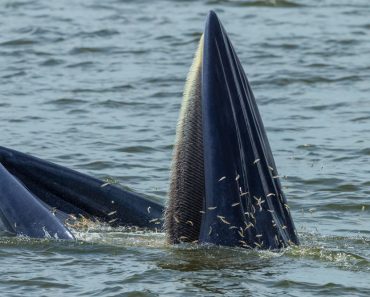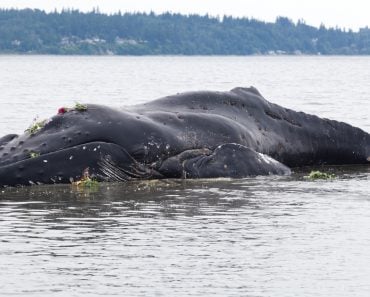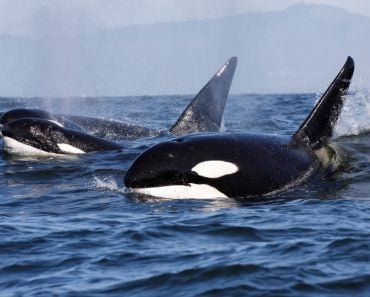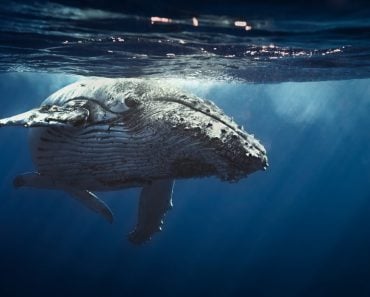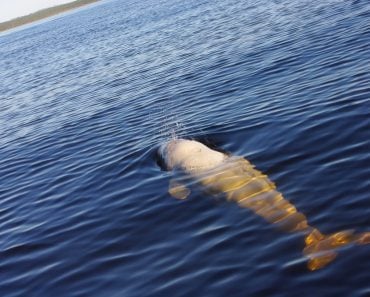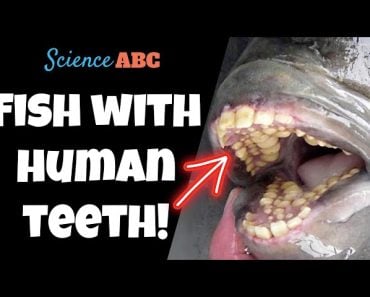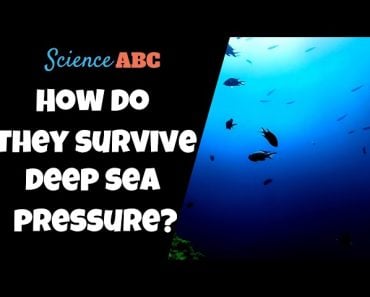Table of Contents (click to expand)
Whales, in general, are not capable of swallowing a human being. Blue whales and other baleen whales like it have a small esophagus that span only a few centimeters. A sperm whale could swallow you whole, but you’d pretty soon get digested in its four-chambered stomach, or suffocate from the lack of oxygen.
Imagine you are on a ship sailing gently on the ocean, admiring the clear sky and the gusty breeze until you notice something strange. Something lurks beneath the majestic waters. And, lo and behold, a giant whale leaps out of the water and crashes with a mighty splash.
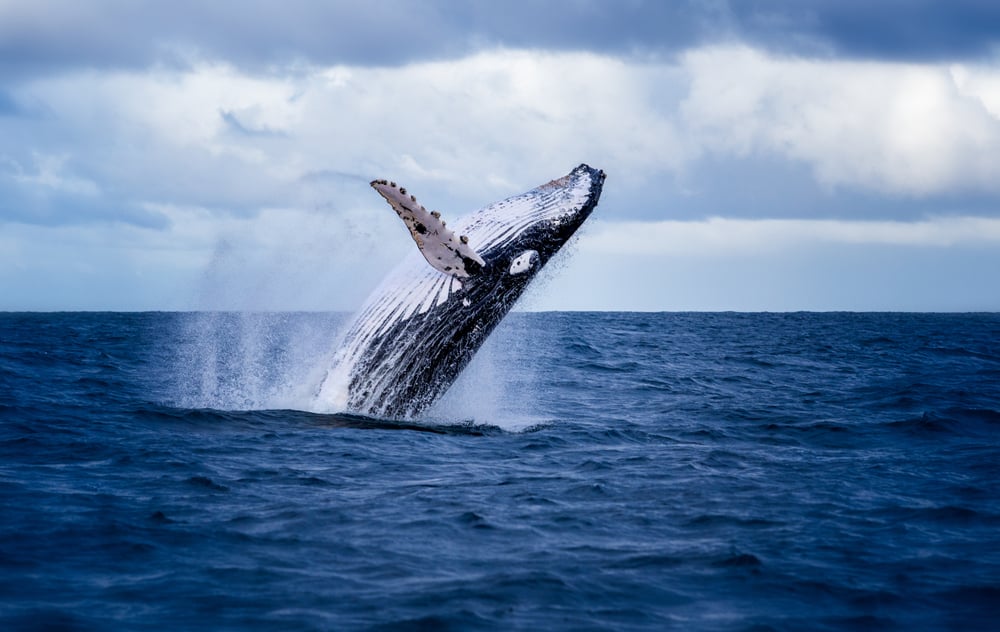
These images are stunning, and you will be overwhelmed by a strange mixture of awe and fear.
In the wake of such unforgettable encounters, you will likely remember a few questions: Could such a massive creature devour you? Can you somehow survive in the mouth of a huge whale? Have such incidents ever occurred?
Recommended Video for you:
How Big Is A Whale?
If you have never seen a whale before, it may be hard to grasp how colossal a whale can be. Blue whales, the biggest sea creatures, can reach a length of almost 30 meters (100 feet) and weigh over 150 tons (300,000 pounds). Their tongue alone can weigh as much as a full-grown elephant!
The body of a blue whale is so large that it can accommodate a few hundred people. However, despite its mammoth size, we need not worry about these big cows of the ocean. They do not usually have sharp teeth to tear their prey apart. Blue whales and many other whales, such as the bowhead whale, humpback whale, and minke whale, have long brush-like teeth that filter their food, plankton, from bigger fish.
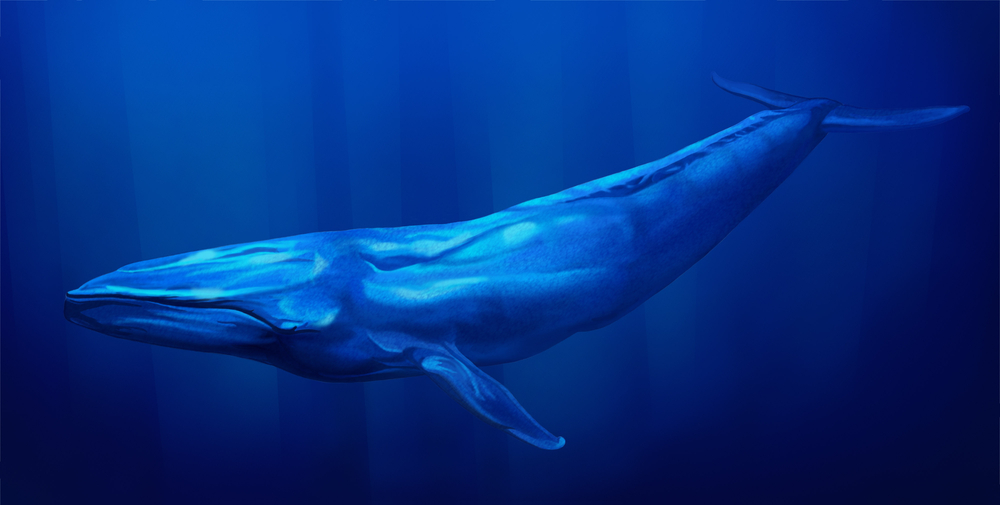
Their small and pointy-toothed cousins—sperm whales—do pose a threat. The archenemies of Captain Ahab in the Moby Dick, a large adult sperm whale can grow about 1.60 meters long and weigh over 100 kilograms. Besides sharp teeth, they also have a good and large appetite. Sperm whales consume almost 3% of their body weight every day.
Considering its size, it should be possible for a blue whale or a sperm whale to swallow a human whole, just like Monstro swallowed Pinocchio, Geppetto, Figaro, and Cleo whole, along with their ship.
Whale Stories
A catalyst of our title question is the stories of sea creatures swallowing humans. Perhaps the most well-known is the myth of Jonah or Jonas from the Book of Jonah. Jonah is said to have been swallowed by a large fish for not obeying God’s judgment to punish the city of Nineveh. Jonah was released after three days and nights of asking God for forgiveness.
Note: Jonah being swallowed by a “whale” is a later addition when naturalists started speculating on which real animal could’ve swallowed Jonah.

This myth has percolated our popular culture. As children, we see a giant sperm whale called Monstro swallow Pinocchio and his family whole, ship, and raft.
James Bartley: Beguiling Story Of A Modern Jonas
Outside of fiction and in real life, the most famous incident of a whale swallowing a man whole and the man making it out alive is that of James Bartley, who earned himself the nickname of a modern Jonah.

The story goes like this: Sometime in February 1891, a young sailor named James Bartley was on board a whaling ship named Star of The East. In the middle of the voyage, the crew members of this ship saw a large whale swimming off the coast near the Falkland Islands.
They dropped a few boats armed with harpoons to hunt the whale, but the small boats could not cope with the sperm whale swimming around. However, one crew member managed to capture the whale and fatally injure it. The whale began to shake its tail, panicked, and overturned a boat. About five members, including Bartley, fell into the water. They heard a roar from the whale, after which it disappeared for some time.
In the meantime, all the crew members were rescued except for one: James Bartley. They assumed he had drowned. They searched for him in vain for a few hours. They had no choice but to return to the larger ship without him.
It did not take long for the whale to reappear. This time, it was bloated and languishing on the surface. A team of sailors decided to take on this sea monster again. As they approached the whale, they realized that it was dead. They hung the dead whale to a winch and brought it closer to the ship. They attached it to the whaling ship and continued its journey.
Two days later, when someone examined this bloated whale, they felt something moving in the whale’s stomach. They decided to cut the whale open. When they cut through the whale’s body, they found a man inside the whale. Lying inside the whale’s intestines, nearly unconscious but alive, was James Bartley.
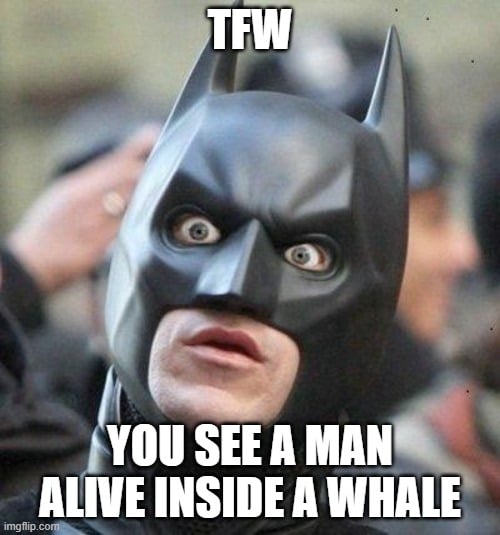
He had survived for several hours or even days in the stomach of the giant creature. Although he was still alive, his face and arms were bleached white, and he could hardly speak.
After a few weeks, he began making steady progress from his deteriorated health. He was eventually back in a state to tell his miraculous tale of surviving inside a whale!

He is said to have told his crew members that he could remember being submerged in the water, and then he saw a huge whale coming towards him with its mouth open. In no time, he was inside the whale’s body. Inside, he was surrounded by darkness and automatically felt himself gliding through a narrow passage that was slimy everywhere. However, after a while, he blacked out and could not remember what had happened.
A few years later, New York World reported on this incident. Later, other print media in the US and the UK picked up on this story, earning the lucky sailor the nickname Modern Jonah. Bartley died 18 years later, and his gravestone in Gloucester, UK, reads: “James Bartley – a modern Jonah.”
Can A Whale Eat You?
Let’s consider which whale, out of all 90 whale species, could swallow you and could have swallowed James Bartley whole.
First, let’s consider the biggest whales on the planet, the blue whales.
Blue Whales
Blue whale species have no teeth at all. They are part of a group of giant whales called the baleen whales. Instead of teeth, they have whalebone, which they use to filter feed. They suck in a bunch of water through their teeth. Small plankton and krill pass through the teeth into the mouth, while anything bigger than that cannot get in. Humans are too big and would fail to pass the filter.
Even if you do pass the filter, baleen whales have a digestive system that, at its largest point in the stomach, spans about 50cm, according to a paper published in 1971 by Hiroshi Hosokawa and Toshiro Kamiya from the Univerity of Tokyo.
The esophagus of these whales is only a few centimeters wide, as you can see in the anatomy figures in this 2022 paper by researchers Kelsey N. Gil, A. Wayne Vogl, and Robert E. Shadwick on how large whales protect their airways from water.
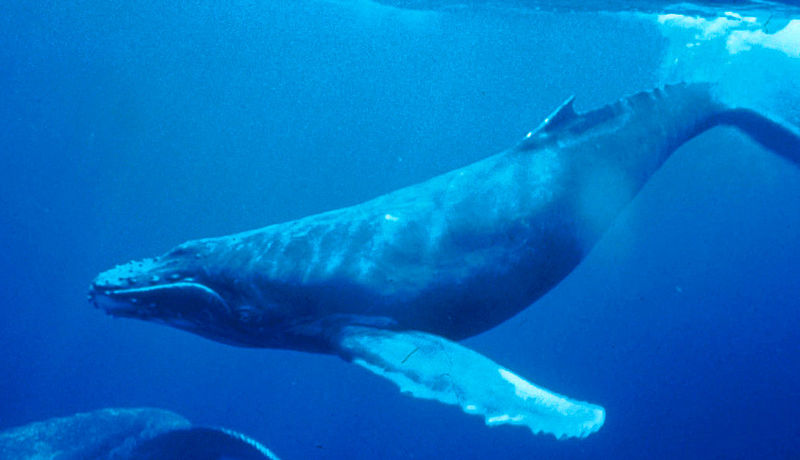
Sperm Whales
This leaves us with the other giant whale, the sperm whale. Sperm whales are aggressive and have teeth the size of large knives on the lower jaw. They often eat large prey, such as fish, octopus, and the almost 10 m long giant squid. To swallow such prey, they have a gullet that allows them to do exactly that.
You’re unlikely to encounter a sperm whale because they hunt so deep below the surface that their lungs collapse. More specifically, a sperm whale often hunts 3,000 feet into the depths! If you were to dive that deep, you’d certainly already be dead.
Say a sperm whale swallows you, and you reach its esophagus. Here, you’ll encounter the animal’s normal digestive processes. You’d have to survive three stomachs, which have a variety of bacteria that produce methane and acid to digest its prey.
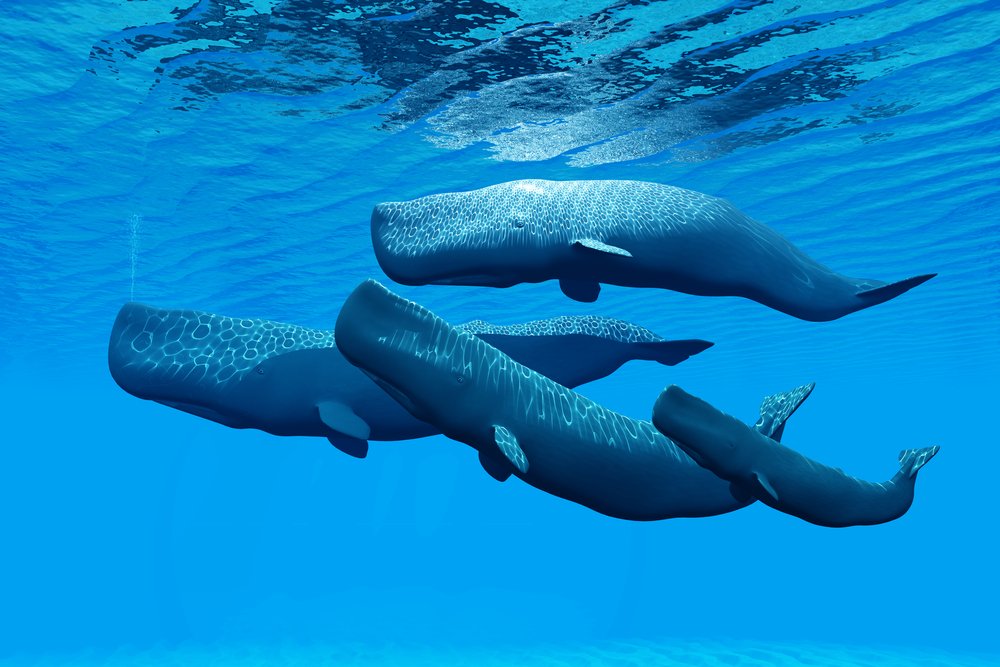
Driving Away The Foam
How, then, did James Bartley survive?
A few decades after the incident, a professor at Messiah College named Edward Davis, having noticed factual inaccuracies in the story, picked it up and launched a formal investigation. He discovered that while there was a ship called Star of the East, there was no whaling ship as had been reported in the media.
After carefully examining newspapers and documents from that time, he found a list of sailors and other crew members who had boarded that ship. He found no mention of a James Bartley on this list.
The wife of the captain of this ship wrote him a letter refuting the claims of a man who was eaten alive by a whale. She wrote, “There is not a single word of truth in the history of whales. I have been with my husband on the Star of the East all these years. There has never been a man who went overboard while my husband was in it.
The biggest mistake in this story was scientific because even assuming the whale had swallowed Bartley, it would have been impossible for him to survive for several hours without oxygen in the mucous acid stomach!
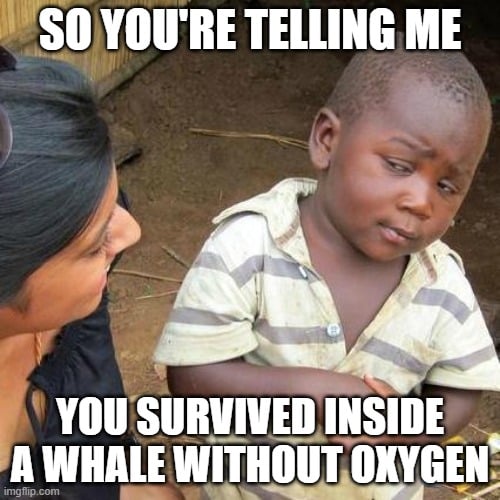
Is There Any Evidence That Whales Swallow Humans?
A few years ago, a journalist named Ben Shattuck went through the library hundreds of records in the New Bedford Whaling Museum Research Library to find any cases of whales that have devoured people.
Despite his exhaustive research, he could not find a single tangible report of someone being swallowed alive by a whale. The records only showed sailors’ injuries because of whales, and some even died after getting tangled with a whale. But no devourings.
In summary, whales rarely interfere with humans. However, if you engage with these marine mammals, you could lose an arm or a leg, even though they have no interest in feasting on you.
Despite the various stories of humans surviving in whales dating back to biblical times, it is scientifically impossible to be swallowed alive by a whale. and tell the story!
Last Updated By: Salama Yusuf
References (click to expand)
- Could a Whale Accidentally Swallow You? It Is Possible.
- ACKERMANN, A. S. E. (1938, April). A Whale Story. Nature. Springer Science and Business Media LLC.
- Swallowed by a whale -- a true tale?.
- A species account of the Sperm whale (Physeter ....
- Mead, J. G. (2009). Gastrointestinal Tract. Encyclopedia of Marine Mammals. Elsevier.
- A Whale of a Tale: Fundamentalist Fish Stories.
- Gaskin, D. E., & Cawthorn, M. W. (1967, June). Diet and feeding habits of the sperm whale(Physeter Catodon L.)in the cook strait region of New Zealand. New Zealand Journal of Marine and Freshwater Research. Informa UK Limited.
- Gil, K. N., Vogl, A. W., & Shadwick, R. E. (2022, February). Anatomical mechanism for protecting the airway in the largest animals on earth. Current Biology. Elsevier BV.
- some observations on the cetacean stomachs, with special ....
- Facts about blue whales - Whale & Dolphin Conservation USA.
- Vandenberg, M. L., Cohen, K. E., Rubin, R. D., Goldbogen, J. A., Summers, A. P., Paig‐Tran, E. W. M., & Kahane‐Rapport, S. R. (2023, March 8). Formation of a fringe: A look inside baleen morphology using a multimodal visual approach. Journal of Morphology. Wiley.


